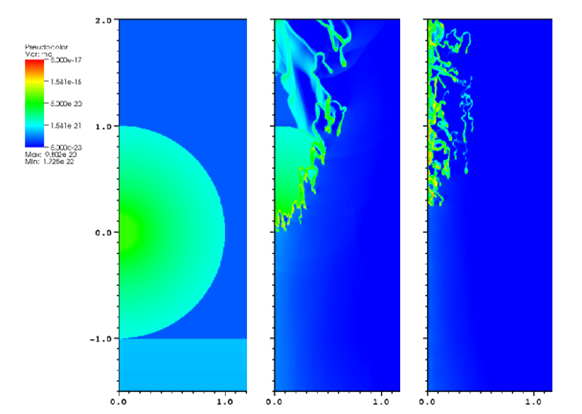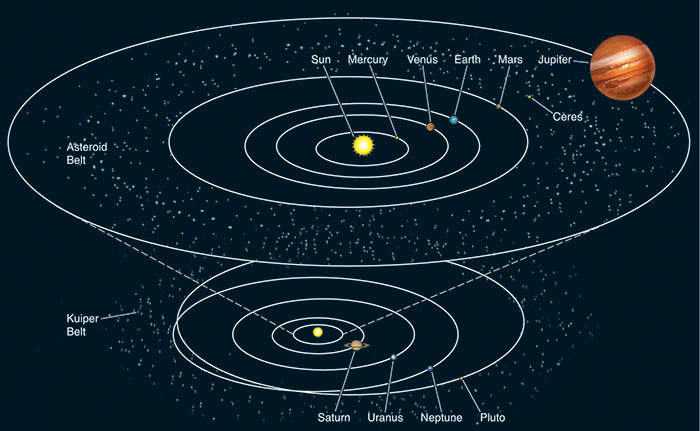

Both Jupiter and Saturn, therefore, have cores composed of heavier rock, metal, and ice, but we cannot see these regions directly.

Under the force of gravity, the heavier elements sink toward the inner parts of a liquid or gaseous planet.

Because the bulk of both planets consists of compressed, liquefied hydrogen, we should really call them liquid planets. Jupiter and Saturn are so large that the gas is compressed in their interior until the hydrogen becomes a liquid. On Earth, both hydrogen and helium are gases, so Jupiter and Saturn are sometimes called gas planets. The two largest planets, Jupiter and Saturn, have nearly the same chemical makeup as the Sun they are composed primarily of the two elements hydrogen and helium, with 75% of their mass being hydrogen and 25% helium. Certainly their compositions are dominated by different elements. The fact that there are two distinct kinds of planets-the rocky terrestrial planets and the gas-rich jovian planets-leads us to believe that they formed under different conditions. Explain why there is geological activity on some planets and not on others.Explain what influences the temperature of a planet’s surface.Describe the characteristics of the giant planets, terrestrial planets, and small bodies in the solar system.By the end of this section, you will be able to:


 0 kommentar(er)
0 kommentar(er)
